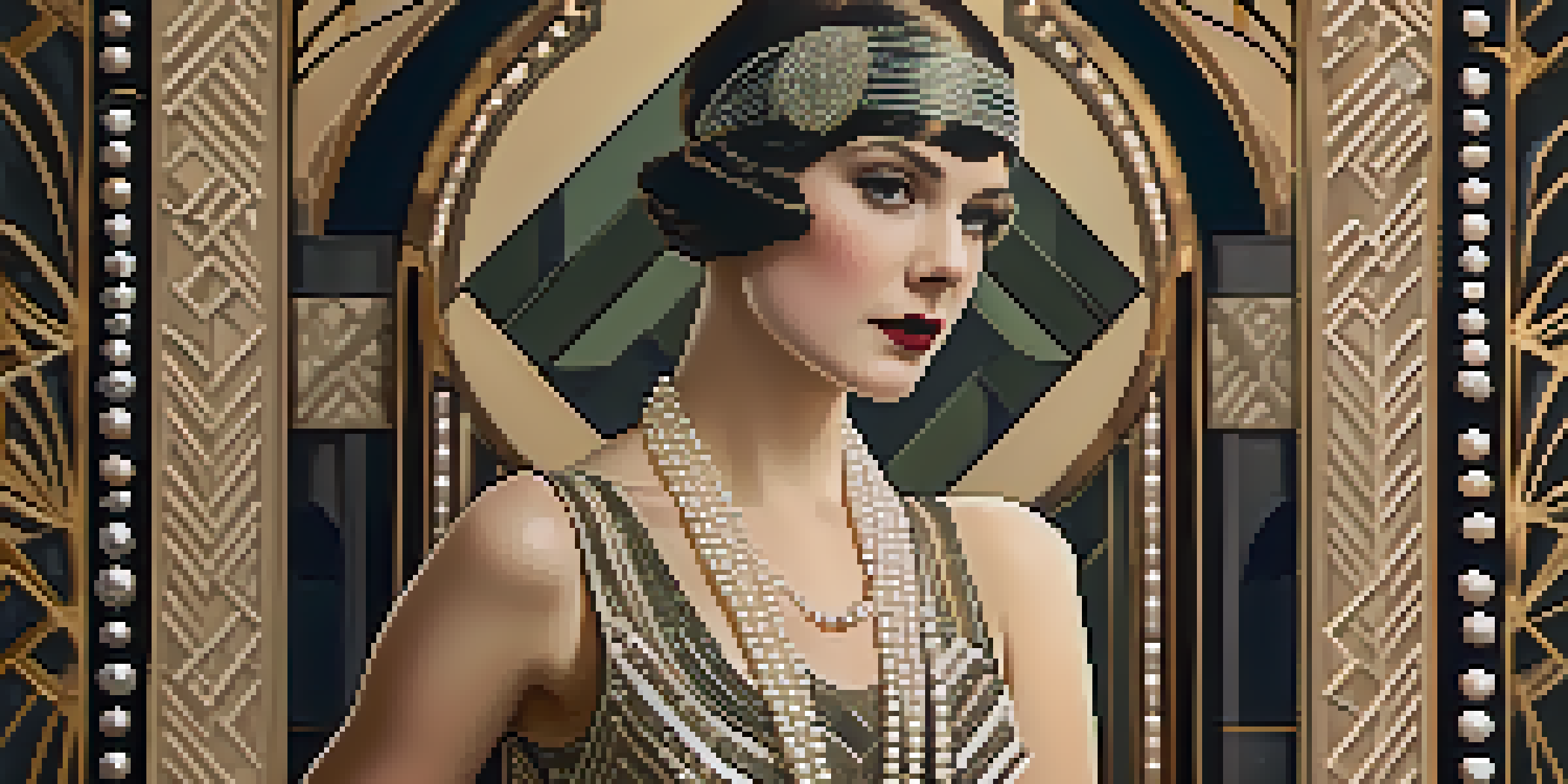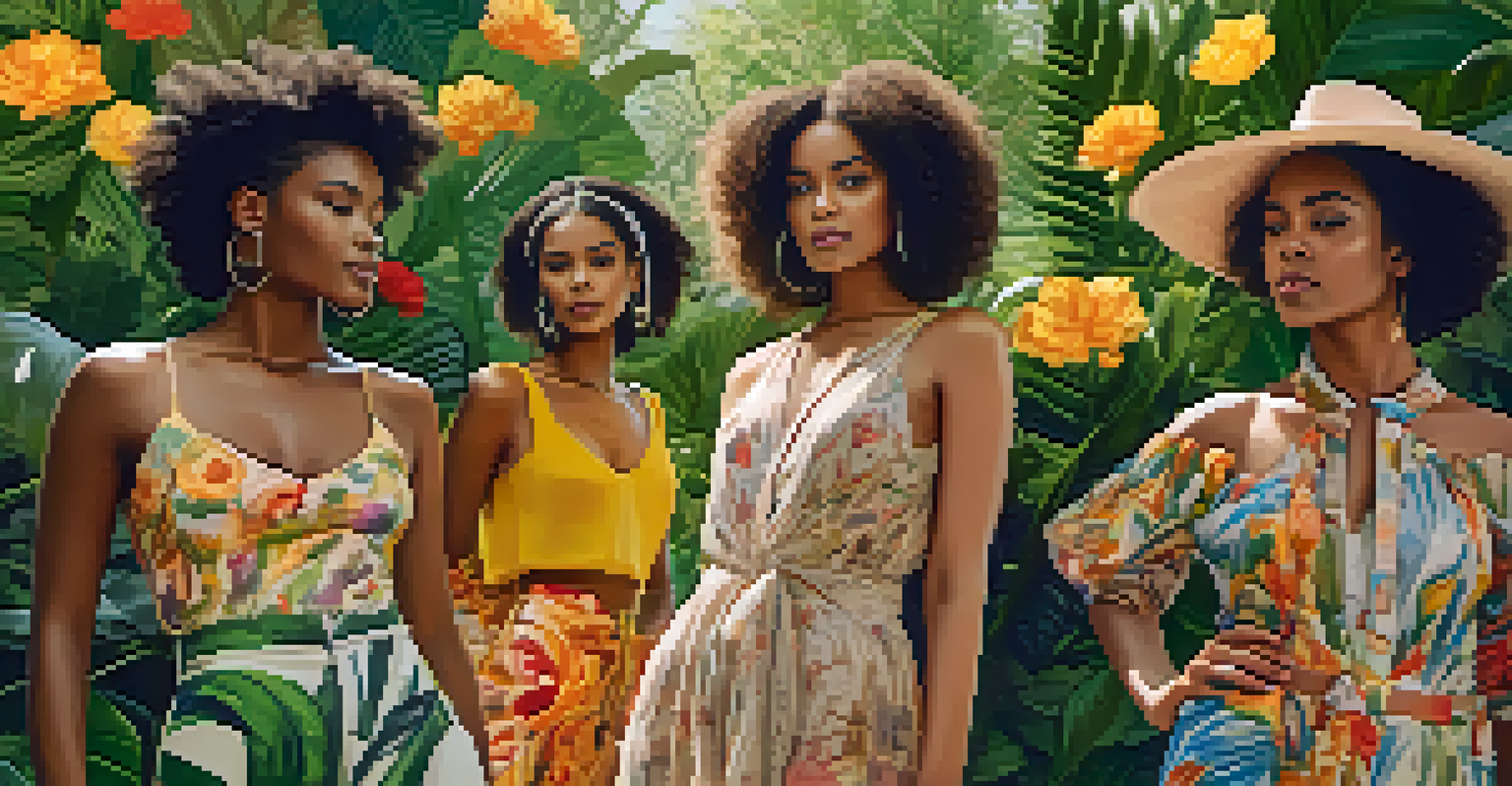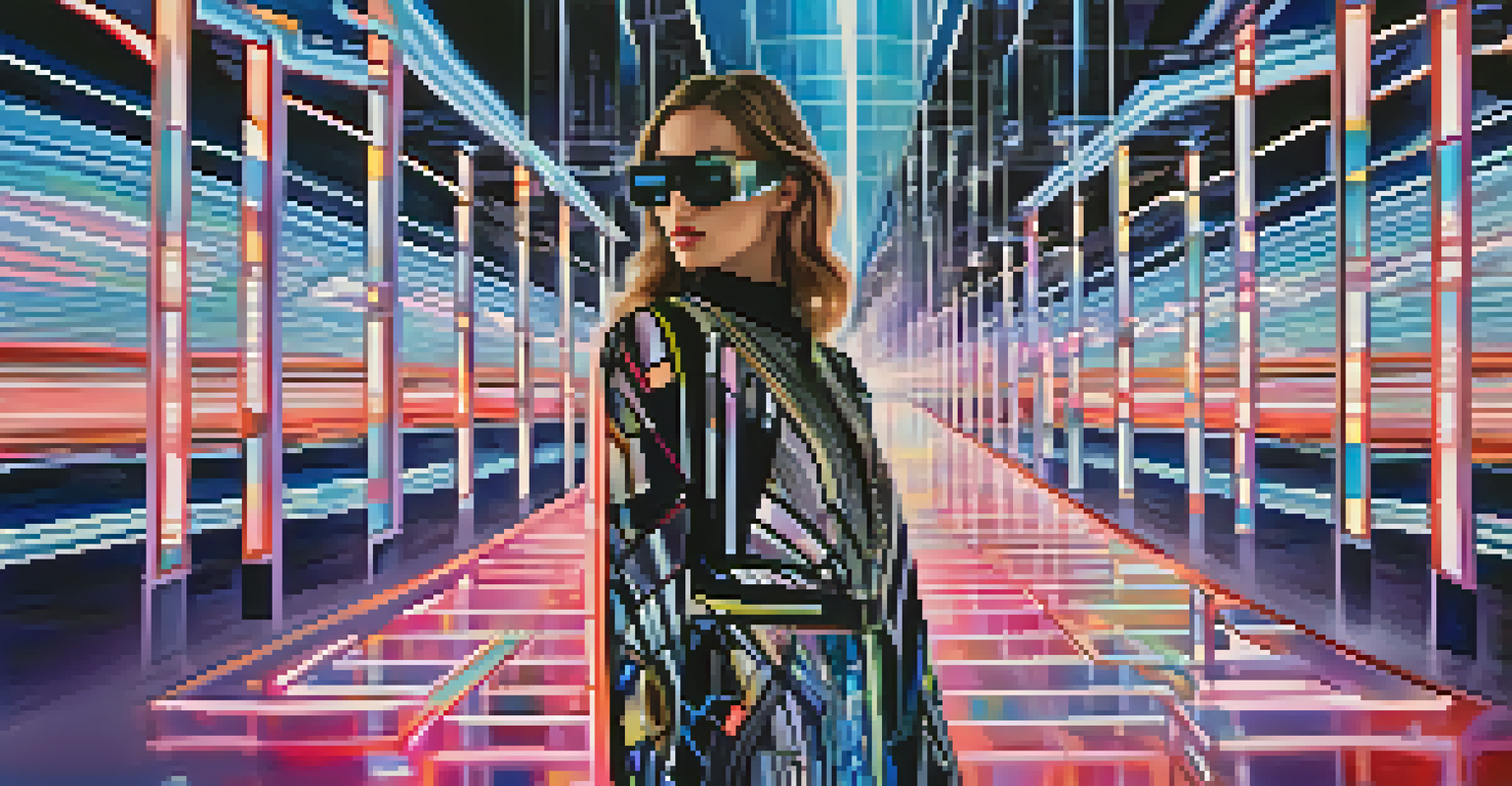The Evolution of Fashion Photography: A Cultural Journey

The Birth of Fashion Photography in the 19th Century
Fashion photography didn't just appear overnight; it has roots in the 19th century. Early pioneers like Charles Frederick Worth used photographs to showcase their designs, marking the beginning of a new art form. This was a time when fashion was primarily captured through illustrations, but photography added a layer of realism that captivated audiences.
Fashion is about dreaming and making other people dream.
As the technology improved, photographers like Edward Steichen began experimenting with lighting and composition, bringing a unique perspective to the fashion world. His work in the early 1900s helped establish photography as a legitimate medium for artistic expression in fashion. Suddenly, clothing wasn't just displayed; it was celebrated.
This era laid the groundwork for what would become a dynamic relationship between fashion and photography, reflecting societal changes and the evolving role of women. It was a cultural shift that would resonate through the decades, influencing both industries in profound ways.
The Golden Age: 1920s to 1950s
The interwar period and post-World War II era marked a golden age for fashion photography. Iconic photographers like Richard Avedon and Irving Penn emerged, capturing the essence of glamour and sophistication. Their work was featured in prestigious magazines such as Vogue and Harper's Bazaar, showcasing not just clothing but a lifestyle.

During this time, fashion photography became increasingly stylized. It was no longer just about showcasing garments but about telling a story through imagery. The combination of high fashion and artistic expression led to unforgettable photographs that remain influential to this day.
Fashion Photography's Evolution
Fashion photography has transformed from simple garment showcases in the 19th century to a dynamic art form reflecting cultural shifts.
This era also reflected shifting cultural norms, particularly in women's fashion. As women gained more independence, their representation in fashion photography evolved, showcasing a more diverse range of styles and attitudes. It was a transformative period that mirrored society's changing values.
Challenging Norms: The 1960s and 1970s
The 1960s and 1970s brought about significant cultural upheaval, and fashion photography mirrored this change. Photographers like Helmut Newton and David Bailey pushed boundaries, creating provocative images that challenged traditional notions of beauty and femininity. This was a time when fashion became a form of rebellion.
Photography is the story I fail to put into words.
The rise of counterculture and youth movements influenced fashion trends, leading to a more eclectic and experimental approach in photography. Styles ranged from the playful and psychedelic to the gritty and raw, reflecting the diverse voices of a generation seeking to break free from convention.
As a result, fashion photography became an important vehicle for social commentary. It was no longer simply about the clothes; it was about identity, freedom, and self-expression. This shift opened the door for future generations to explore deeper themes in their work.
The Digital Revolution: 1990s to Early 2000s
The 1990s ushered in the digital revolution, transforming every aspect of photography, including fashion. The introduction of digital cameras allowed for greater experimentation and creativity, enabling photographers to capture images in new and innovative ways. This technological shift also made it easier for emerging talents to enter the field.
Icons like Mario Testino and Annie Leibovitz rose to prominence during this time, using their unique styles to shape the visual language of fashion. Their photographs often blended high fashion with celebrity culture, creating a new standard for what fashion photography could achieve.
Fashion Photography's Historical Roots
The evolution of fashion photography began in the 19th century with pioneers like Charles Frederick Worth, who utilized photography to showcase designs and create a new art form.
Additionally, the rise of the internet and social media began to change how fashion was consumed. Photographers could share their work globally, leading to a democratization of fashion imagery. This shift allowed new voices to emerge, challenging the traditional gatekeepers of the industry.
The Influence of Social Media: 2010s Onwards
As social media became a dominant force in the 2010s, fashion photography underwent another transformation. Platforms like Instagram allowed photographers, models, and brands to connect directly with audiences, bypassing traditional media. This shift created a more immediate and personal relationship between fashion and its consumers.
The rise of 'influencer culture' changed the landscape of fashion photography, as social media stars became key players in the industry. Their authentic, relatable images often resonated more with audiences than traditional campaigns, highlighting the power of personal branding.
However, this era also raised questions about authenticity and representation in fashion photography. As the industry continues to evolve, the challenge remains to balance commercial interests with genuine storytelling, ensuring that all voices are heard and represented.
Sustainability and Ethical Fashion Photography
In recent years, sustainability has emerged as a critical focus within the fashion industry, and photography is no exception. Photographers are increasingly using their platforms to promote ethical practices and raise awareness about the environmental impact of fast fashion. This shift reflects a growing consumer demand for transparency and responsibility.
Innovative campaigns emphasize sustainable materials and ethical labor practices, showcasing brands that prioritize the planet. By highlighting these values through compelling imagery, photographers play a vital role in shaping consumer perceptions and encouraging conscious shopping habits.
Digital Shift Transforms the Industry
The rise of digital technology in the 1990s revolutionized fashion photography, allowing for greater creativity and access for emerging photographers.
Moreover, this focus on sustainability has opened up new creative avenues for fashion photography. Artists are finding unique ways to capture the essence of eco-friendly fashion, often incorporating natural elements and storytelling to convey their messages. It's an exciting time for the industry, as it embraces a more holistic approach to fashion.
The Future of Fashion Photography: Trends to Watch
As we look to the future, several trends are set to shape the evolution of fashion photography. One significant shift is the rise of augmented reality (AR) and virtual reality (VR), which offer immersive experiences for consumers. These technologies allow fashion brands to create interactive campaigns that captivate audiences in entirely new ways.
Additionally, diversity and inclusivity continue to be at the forefront of the conversation. Photographers are increasingly showcasing models of different backgrounds, body types, and ages, reflecting the rich tapestry of society. This push for representation is not just a trend; it's a necessary step towards a more equitable industry.

Finally, the intersection of art and fashion will continue to flourish, as photographers collaborate with artists from various disciplines. This cross-pollination fosters innovation and challenges the boundaries of traditional fashion photography, paving the way for a vibrant future that celebrates creativity and diversity.